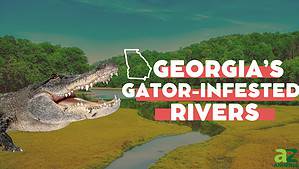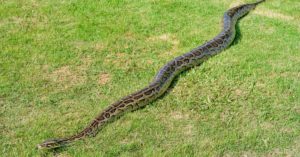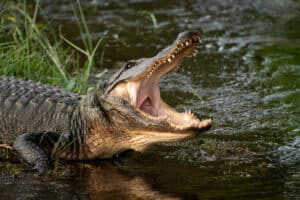Albino alligators (Alligator mississippiensis) are like normal green alligators except that they’re white. They behave the same, eat the same foods, and live in the same territories around the southeastern United States. However, they have difficulty making it in the wild because they don’t blend into their surroundings. How many albino alligators are there on Earth?
What is Albinism?
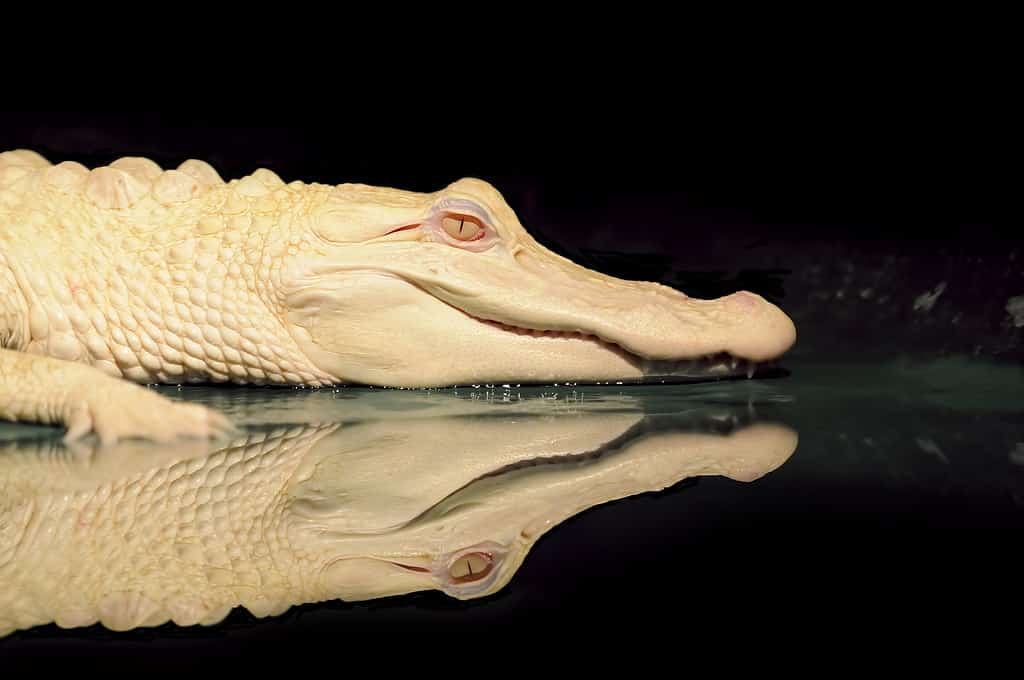
Albino alligators have a genetic condition that causes them to lack all pigmentation.
©Jerry Ballard/iStock via Getty Images
Albinism is a genetic condition that causes animals to lack pigmentation as they cannot create melanin. Their eyes are white but appear pink or red because their blood vessels are visible.
The lack of pigmentation in an albino alligator’s skin makes them sensitive to direct sunlight. However, an alligator born with albinism isn’t aware of its condition and will continue to spend time sunning itself like a normal gator. As a consequence, they can sunburn themselves to death.
How Many Albino Alligators Are There on Earth?
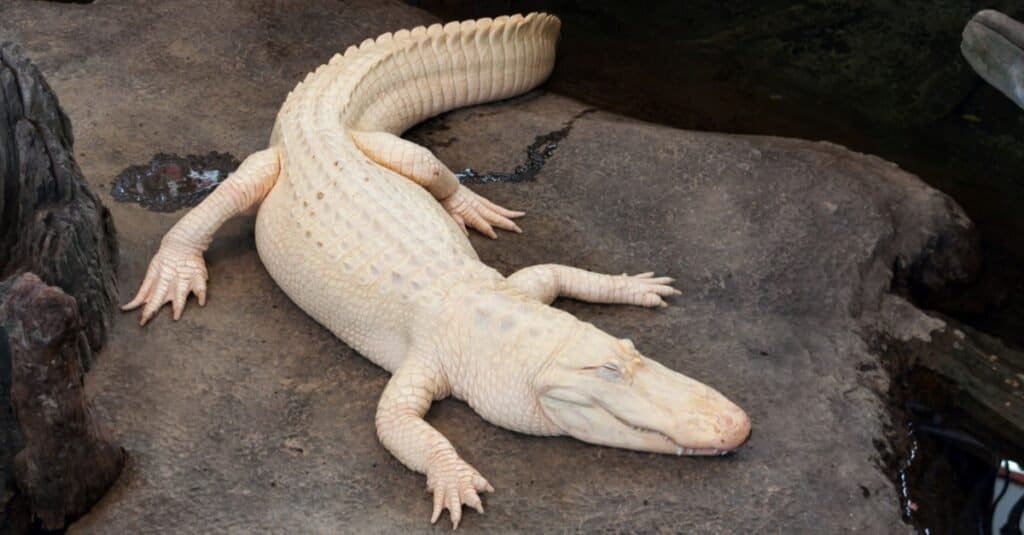
About 100 albino alligators are alive on Earth today.
©one5zero/Shutterstock.com
It is estimated that there are about one hundred albino alligators on Earth. However, only around a dozen live in captivity, and almost all albino alligators in the wild do not make it to adulthood.
Are Leucistic Alligators the Same as Albino Alligators?
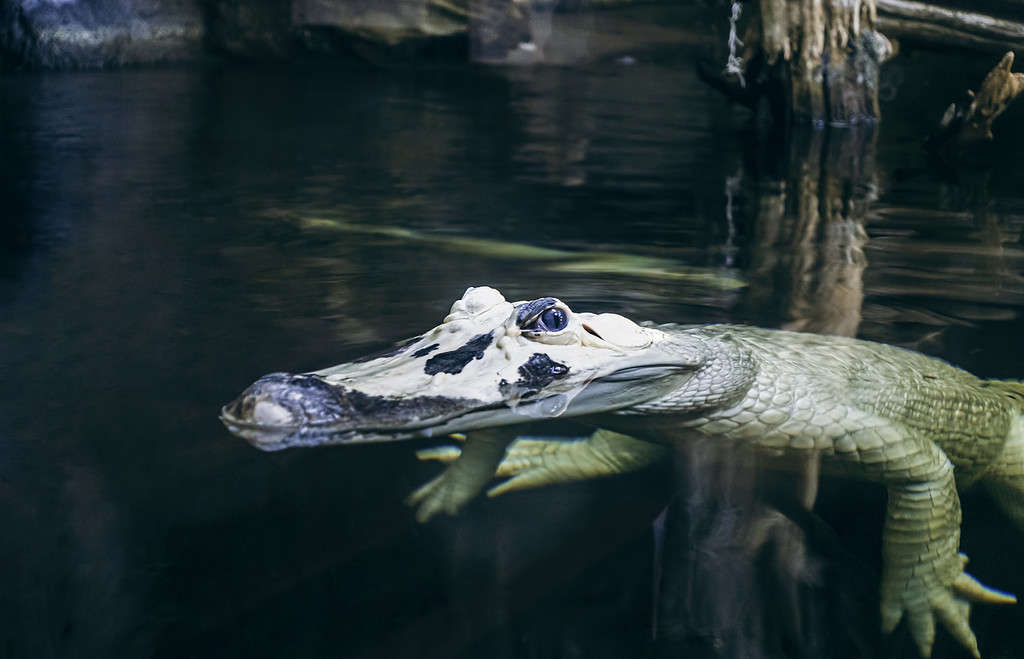
Leucistic alligators are not the same as albino alligators, even though they are mostly white.
©sfe-co2/iStock via Getty Images
No, leucistic alligators are not the same as albino alligators. Since both leucistic and albino alligators appear white, they are lumped together as white alligators by most laymen. However, they are distinct from one another.
Leucism isn’t a genetic disorder like albinism but rather a defect in the animal’s cells responsible for creating pigment. This defect still allows leucistic animals to retain some pigmentation.
Because some of their cells retain pigmentation, leucistic alligators have patches of color on their bodies, and their eyes are blue. On the other hand, albino alligators lack all pigmentation, and their eyes are white or red.
How Many Leucistic Alligators Are There on Earth?
No one is sure how many leucistic alligators are in the wild. However, there are only around eight leucistic alligators in captivity today.
In South Carolina, 6 leucistic alligator hatchlings were captured in March 2014. Since leucism makes it hard for alligators to hunt because they’re so easy to see by the animals they want to eat, they were malnourished.
Three of the captured hatchlings died right away, while the other 3 were transferred to various places for long-term living situations. Unfortunately, the remaining animals died less than 4 years after their captivity began.
Where Can I See Captive Albino and Leucistic Alligators?
Since white alligators are easy to spot in the wild and don’t do well on their own, they often end up in captivity. Those that aren’t captured and kept safe by humans usually die before reaching maturity.
Wildlife organizations in various spots around the United States own white alligators that are viewable to the public. Some of these locations are in states where both albino and leucistic alligators can be found, while others exist outside of the alligator’s natural range. This is not an exhaustive list of all white alligators on view in the United States, but this list is a good place to start if you’re seeking to set your eyes on one of these rare gators.
White Alligators in California
An albino alligator lives at the California Academy of Sciences in San Francisco. This alligator is named Claude, and he’s the centerpiece of an exhibit showcasing various animals from the American South.
White Alligators in Florida
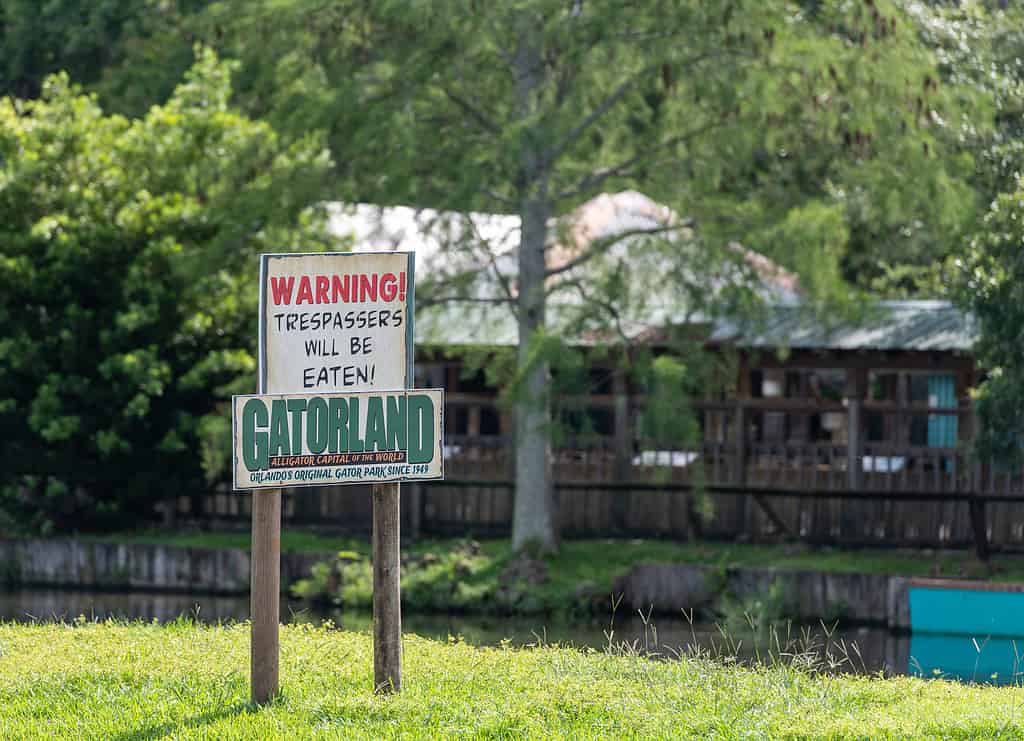
Gatorland in Orlando, Florida, owns 2 leucistic and 3 albino alligators.
©Susan Perry/iStock via Getty Images
In Orlando, Florida, Gatorland keeps 3 albino alligators and 2 leucistic alligators. The two adult leucistic alligators are brothers named Trezo Jo and Feros Zonbi. Their albino alligators are called Pearl, Moonshine, and Cottontail. Gatorland recently welcomed a newly hatched leucistic alligator bred onsite to its collection in December 2023.
Also in Orlando, Gator Spot, located at Fun Spot, has a leucistic alligator named Jeyankwok. Gatorland operates the Gator Spot at Fun Spot mentioned above, but it offers more than just an opportunity to view wildlife. There is a theme park, restaurants, and more at Fun Spot.
In Kenansville, Florida, visitors to Wild Florida can see albino alligators. Two adult albino gators held by this zoo since 2017 have produced albino hatchlings as the condition is hereditary. The parents are named Blizzard and Snowflake.
The Gulf Breeze Zoo in Gulf Breeze, Florida, hosts an albino alligator encounter. Guests can pay extra to get up close to one of two albino alligators owned by the zoo. These alligators are named Nero and Brutus.
White Alligators in Georgia
Atlanta’s Georgia Aquarium hosts albino alligators. The aquarium’s River Scout habitat has hosted these alligators since 2020.
White Alligators in Kentucky

Snowflake and Snowball are the two albino alligators kept by the Newport Aquarium.
The Newport Aquarium in Newport, Kentucky, has two albino alligators. One is named Snowball, and the other is named Snowflake. This aquarium is close to Cincinnati, Ohio, with thousands of animal species in around 70 exhibits.
The Louisville Zoo in Louisville, Kentucky, has an albino alligator in its HerpAquarium. Its name is King Louie.
White Alligators in Louisiana
At the Audobon Zoo in New Orleans, Louisiana, visitors can see leucistic alligators. There are 2 onsite named Victor and Two-Spot.
White Alligators in Ohio
At the African Safari Wildlife Park in Port Clinton, Ohio, there is an albino alligator. She’s a 23-year-old female named Jewel.
White Alligators in Texas
In New Braunfels, Texas, the Animal World and Snake Farm Zoo own 3 albino alligators. These alligators became zoo inhabitants in 2022 because they needed rehabilitation.
The photo featured at the top of this post is © Jerry Ballard/iStock via Getty Images
Thank you for reading! Have some feedback for us? Contact the AZ Animals editorial team.




